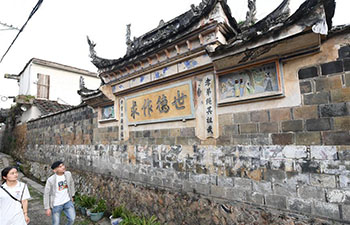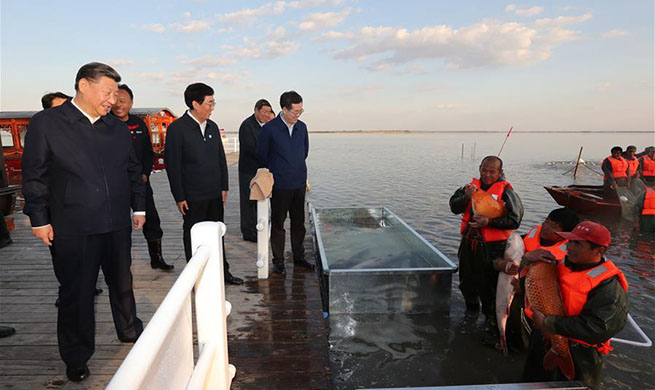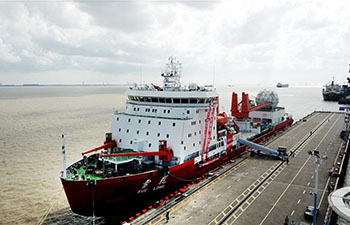ANKARA, Sept. 27 (Xinhua) -- Turkish authorities have announced that an early-Christian basilica discovered at the bottom of a lake in the northwestern city of Iznik, ancient Nicaea, a pivotal site for Christendom, will be transformed into an underwater museum.
The basilica, a Roman-style church, lies about three meters beneath water, 50 meters off the shore. According to scientists, an earthquake destroyed the structure in the 8th century and it later sank into the lake and rested there totally forgotten before it was discovered centuries later by accident.
Alinur Aktas, the mayor of Bursa, the province where Iznik city is located, said in a written statement that Turkey's first underwater archeological museum will be built around the 1,700-year-old basilica and will be opened for tourists.
A project has been prepared and submitted to Turkish Culture and Tourism Ministry and once a greenlight is given, works will begin for building a museum and a 20-meter high viewing tower on the shores of Iznik Lake where artifacts of the basilica will be displayed, said the mayor.
"The site will also be open for eager divers and will make a great contribution to tourism," Aktas said, adding that professional diving courses will be offered as part of the project.
A walkway over the lake may also be built as well as a submerged glass room where people could pray.
The project could begin as soon as towards the end of next year, Xinhua learned form cultural authorities.
The ruins of the ancient church were found back in 2014 by local archeologist, professor Musafa Sahin, during a survey of aerial photographs of the lake, reported state-run Anadolu Agency.
Professor Sahin was looking for the remains of this church for years but he was checking the terra firma instead of the bottom of the lake.
According to researches conducted by a team of archaeologists led by professor Sahin, the church was most likely built on top of a temple to the Greek and Roman sun god Apollo, like other temples of this kind built in this region and discovered by researchers.
The expansion of the Early Church in the first centuries mainly happened in western, central and eastern Anatolia which was part of the Roman Empire.
The discovery of the submerged church has made ripples in the Christian community because it was in Nicaea that the so called "first council of Nicaea" was held in 325 A.D. under the orders of Constantine I.
Constantine I was the first Roman emperor to convert to Christianity, and the council that he conveyed laid the foundation of a coherent system of teaching in this religion plagued before this momentous event by conflicts between different theological factions.
Some landmark dates were also agreed upon like Easter by hundreds of bishops across the known world of the time who gathered in Nicaea on the shores of the lake.
In the globally famous fiction novel "The Da Vinci Code" by Dan Brown, the Nicaea council has a prominent importance and protagonists discuss that bishops who participated in the landmark meeting voted on the divinity of Jesus Christ.
So it may not to be far fetched that the council members met indeed in this ancient church, argue scholars, even though this remains still to be proven by science.













